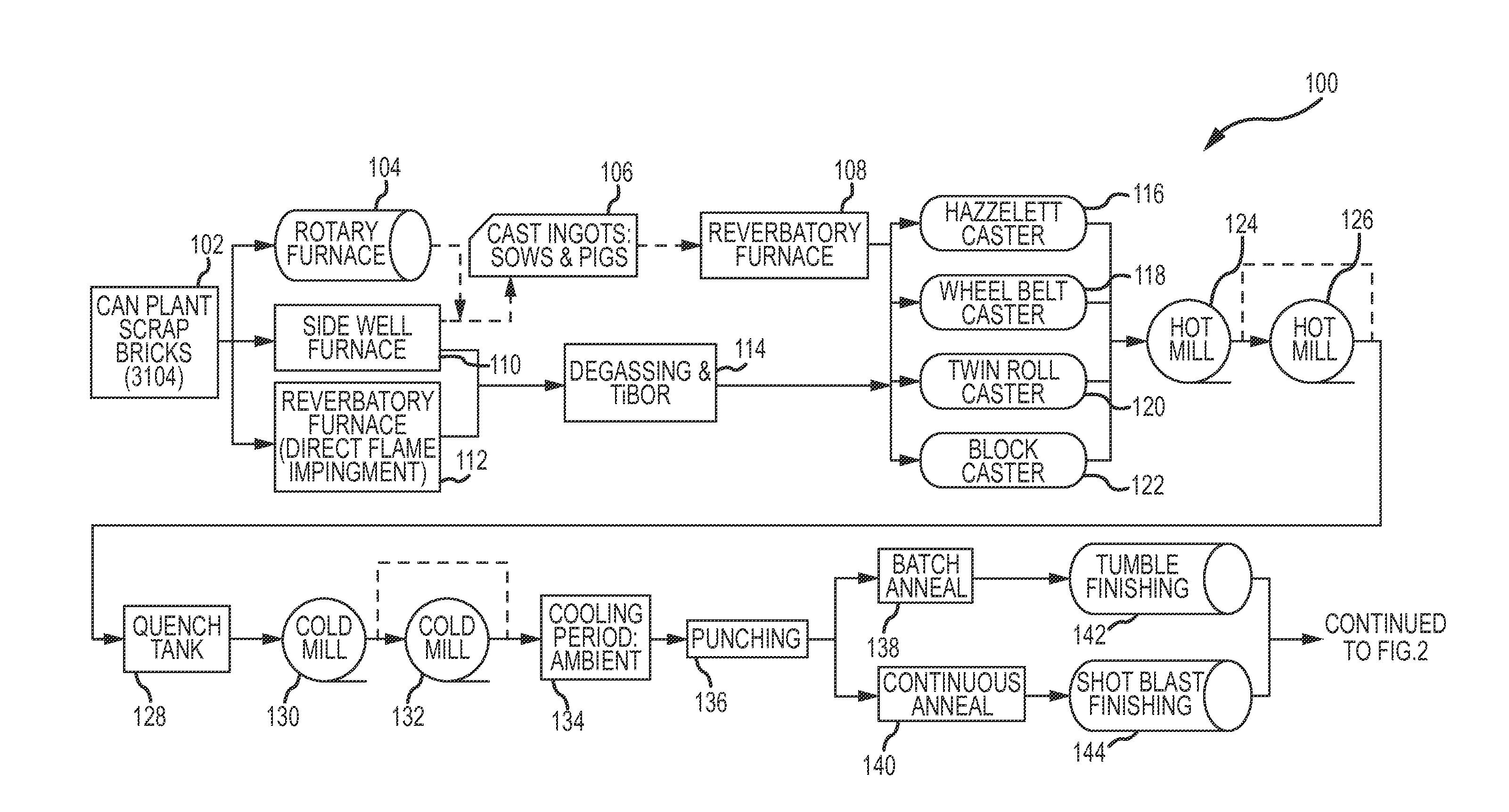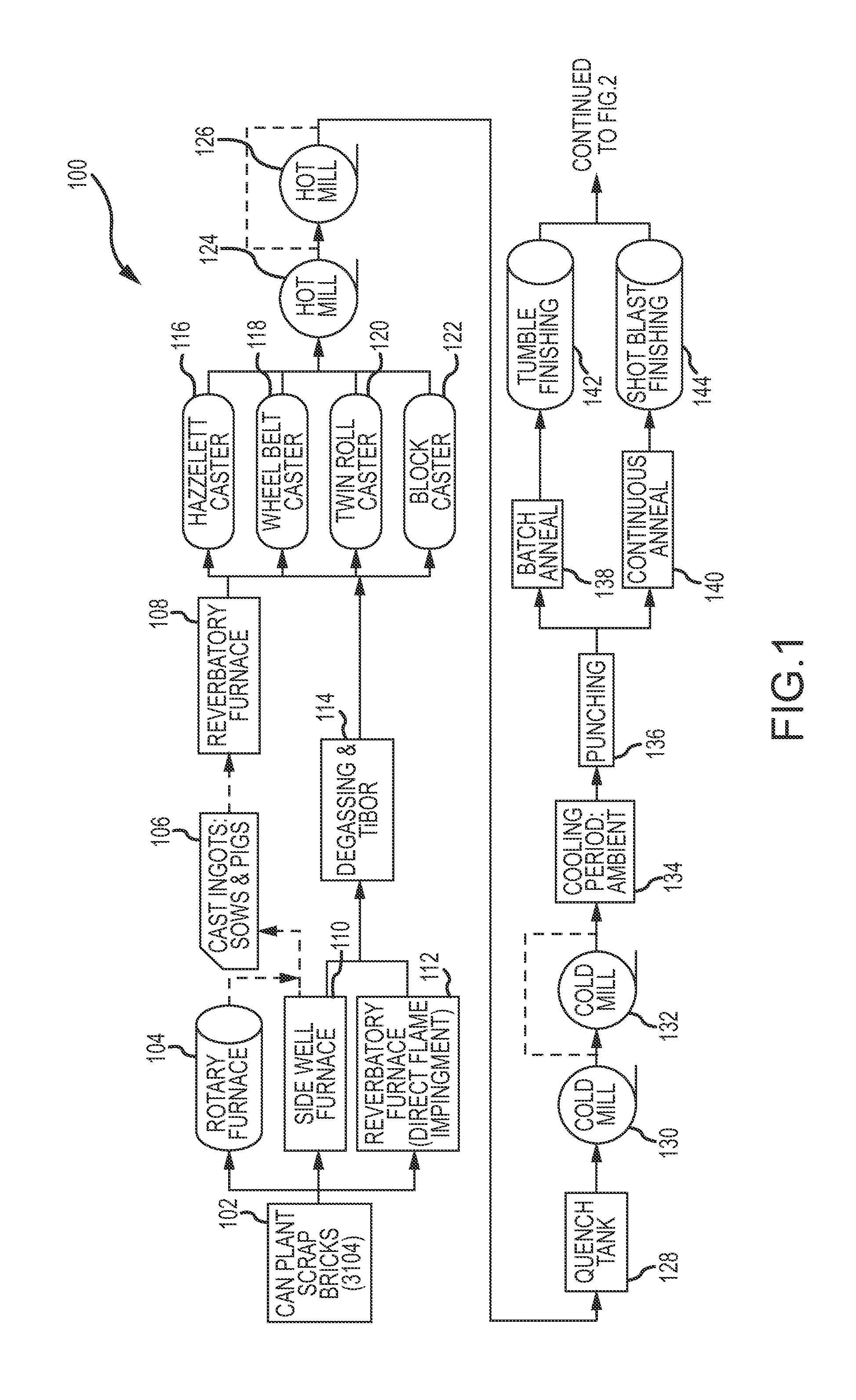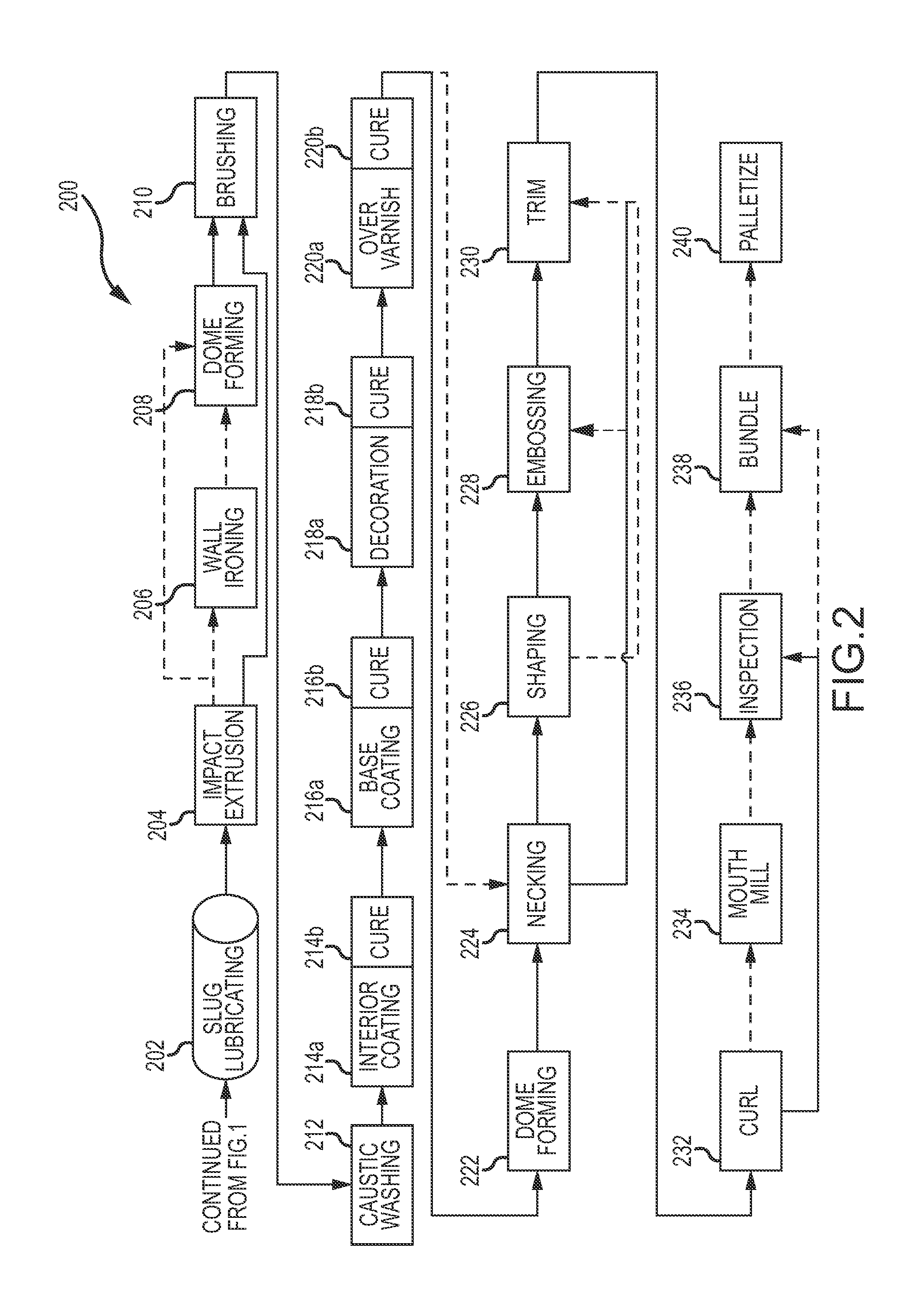Impact extruded containers from recycled aluminum scrap
- Summary
- Abstract
- Description
- Claims
- Application Information
AI Technical Summary
Benefits of technology
Problems solved by technology
Method used
Image
Examples
example 1
[0107]Example 1 utilized Material 1 and Material 2 with slugs that had a diameter of about 44.65 mm and a height of about 5.5 mm. The mass of the slug material was about 23.25 g. The final dimension of the container following processing, but prior to trimming, was about 150 mm+ / − about 10 mm in height by about 45.14 mm in diameter. The thickness of the final container was about 0.28 mm+ / −0.03 mm. The final mass of the container was about 23.22 g. A standard necking tooling was used.
[0108]Material 1 slugs tend to perform better in general with no score mark nor scratches emergence neither outside nor inside the tubes. Material 2 slugs are more sensitive to scratches and are more abrasive to the punch head surface. After using Material 2 slugs, the punch head needed to be changed because was worn. A larger punch may be required to meet the container parameters.
example 2
[0109]Example 2 utilized Material 1 and Material 2 with slugs that had a diameter of about 44.65 mm and a height of about 5.0 mm. The mass of the slug material was about 21.14 g. The final dimensions of the container following processing, but prior to trimming was about was about 150 mm+ / − about 10 mm in height by about 45.14 mm in diameter. The thickness of the final container was about 0.24 mm+ / −0.03 mm. The final mass of the container was about 20.65 g. A larger diameter pilot was used. The diameter of the pilot was about 0.1 mm.
[0110]Almost no eccentricity in wall thicknesses (< about 0.02 mm) occurred due to the use of a brand new press die and a punch head. Once again, the slugs from Material 1 appear to perform better than Material 2 slugs. Indeed, similar than the results from Experiment 1, almost no scratch was visible neither inside nor outside the containers with Material 1. When Material 2 slugs were used, scratches appeared after 6-7 ku from time to time on the exterior...
PUM
| Property | Measurement | Unit |
|---|---|---|
| Fraction | aaaaa | aaaaa |
| Fraction | aaaaa | aaaaa |
| Thickness | aaaaa | aaaaa |
Abstract
Description
Claims
Application Information
 Login to View More
Login to View More - R&D
- Intellectual Property
- Life Sciences
- Materials
- Tech Scout
- Unparalleled Data Quality
- Higher Quality Content
- 60% Fewer Hallucinations
Browse by: Latest US Patents, China's latest patents, Technical Efficacy Thesaurus, Application Domain, Technology Topic, Popular Technical Reports.
© 2025 PatSnap. All rights reserved.Legal|Privacy policy|Modern Slavery Act Transparency Statement|Sitemap|About US| Contact US: help@patsnap.com



